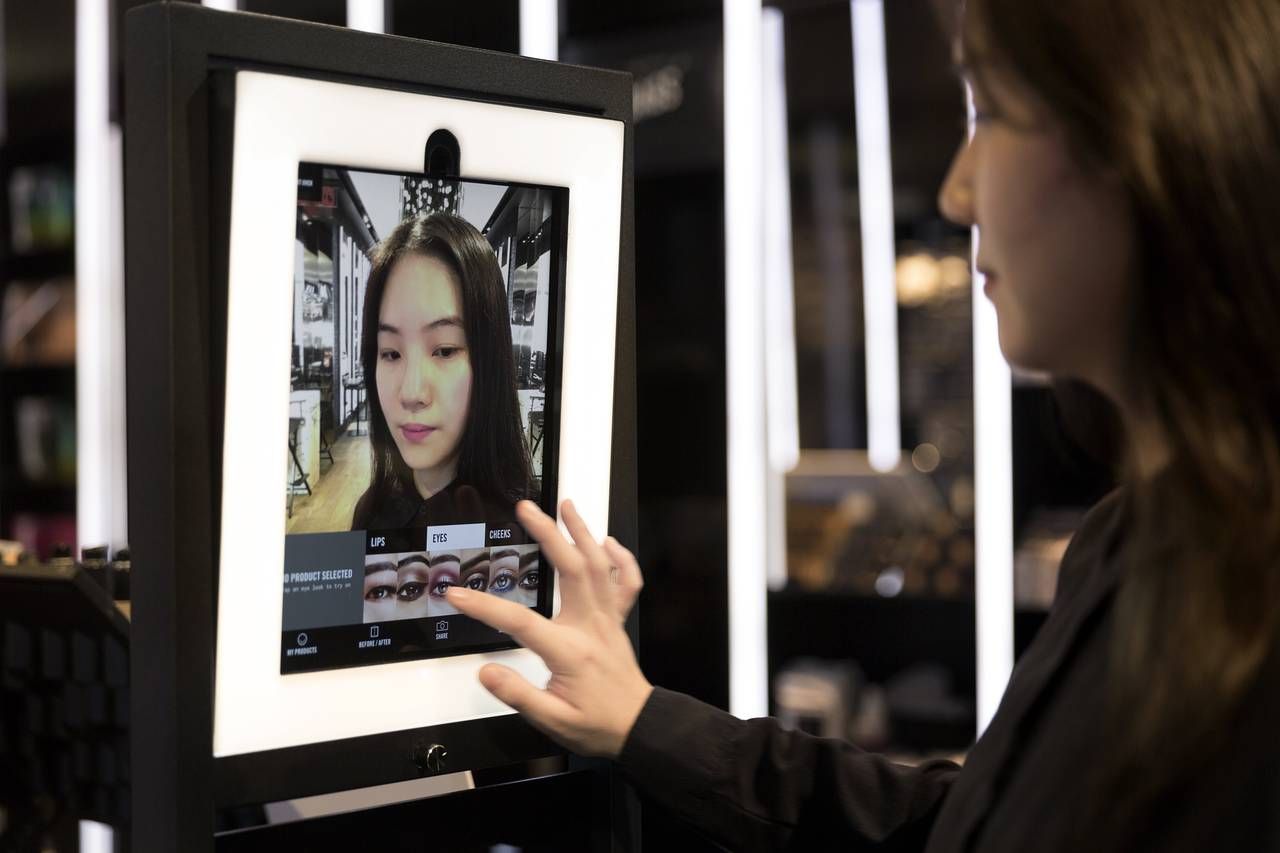By Moody Mattan
•
April 2, 2025
Introduction Out-of-Home (OOH) advertising – encompassing billboards, transit signs, and digital displays – has experienced a remarkable technological evolution since the internet's emergence in the early 1990s. As consumers became increasingly connected online, the traditionally static OOH medium began incorporating digital capabilities to maintain its relevance and effectiveness. This research report, directed at OOH advertising executives and Fortune 1000 marketing leaders, chronicles key advancements in OOH technology in the U.S. (with global comparisons) over the past few decades. It emphasizes high-level trends and widely adopted technologies, including digital billboards, programmatic digital OOH (DOOH) buying, geolocation and mobile integrations, data-driven targeting, augmented/virtual reality (AR/VR) enhancements, improved measurement and attribution, and the growing role of artificial intelligence (AI). The objective is to illustrate how OOH advertising has evolved from static posters into a dynamic, data-driven channel, while providing insight into the industry's future direction headed. 1990s: Laying the Groundwork in a Connected World In the 1990s, the rise of the Internet did not immediately change the predominantly analog nature of out-of-home (OOH) advertising, but it laid the groundwork for future innovation. During this era, OOH advertising in the U.S. was still dominated by static billboards, posters, and transit signage. The decade witnessed ongoing investment in traditional formats (such as vinyl billboards replacing paper for enhanced durability) and iconic illuminated signs (like the neon-lit billboards in Times Square). While OOH remained a physical medium , the emerging digital revolution suggested new possibilities. Initial digital signage experiments began to appear in high-traffic areas—for instance, electronic displays in locations like Times Square and Las Vegas—but these were custom installations rather than widespread advertising networks. The OOH industry acknowledged the Internet’s potential to facilitate remote content control and data sharing , even though the technology was not yet prepared for mainstream use. By the late 1990s, companies were investigating how new digital display technologies (like LED screens) and internet connectivity could eventually be applied to billboards. These early endeavors set the stage for the digital out-of-home revolution that would unfold 2000s. Early 2000s: The Advent of Digital Billboards The early 2000s marked a pivotal turning point as digital billboards made their entrance, fundamentally transforming out-of-home (OOH) advertising. Breakthroughs in LED display technology and reduced electronics costs reached a tipping point around 2000, suddenly making large-format digital screens economically viable for outdoor use. In 2001, Lamar Advertising installed the industry’s first large digital billboard, a low-resolution LED display in Baton Rouge, Louisiana; this groundbreaking pilot demonstrated the concept’s potential. Over the next few years (2001–2004), major OOH companies trialed digital displays in select markets, refining the technology and demonstrating a return on investment. By 2004–2005, costs had decreased and reliability improved to the point that digital billboards entered a phase of rapid growth , with manufacturers shipping dozens of units per week to meet demand demand. These LED billboards offer several advantages over traditional static signs. They are bright, eye-catching, and visible even in daylight, allowing multiple ads to rotate in the same location and multiplying revenue opportunities for operators. For advertisers, digital screens provide flexibility that was previously unheard of in traditional out-of-home (OOH) advertising—content can be updated remotely in real-time, eliminating the costs and delays associated with replacing printed vinyl. By the late 2000s, major U.S. cities and highways were dotted with digital billboards, enabling advertisers to experiment with creative digital content, such as animated visuals or countdown clocks, to better engage passersby. This trend was mirrored globally in other markets, from the bright digital facades of Tokyo and London to the digital screens in emerging markets, although the U.S. remained a leading adopter. Consequently, OOH ad spending began to shift toward digital formats. (As a reference point, global OOH advertising revenue was approximately $30 billion in 2017 and continued to grow, with over 25 million digital OOH units deployed worldwide by 2018.) Today, in the U.S., roughly one-third of all OOH ad spending is on digital formats, reflecting how quickly digital billboards have become a cornerstone of the industry. Late 2000s: Networking, Geolocation and Mobile Integration As digital screens proliferated in the late 2000s, the focus shifted to connecting OOH with the mobile revolution . The introduction of smartphones (after 2007) and widespread mobile internet access created new opportunities to link outdoor ads with consumers’ devices. OOH operators began equipping digital signage with network connections and software to enable more sophisticated content control, scheduling, and targeting. By leveraging live data feeds, billboards could start to display contextually relevant messaging – for example, showing weather-specific ads (such as a coffee ad on a cold morning) or real-time information like news and sports scores. This period also saw OOH campaigns encouraging viewers to engage via their phones. Simple integrations emerged: SMS short codes on billboards to request more information, or the appearance of QR codes and social media handles on OOH posters. Such tactics bridged physical ads with digital engagement, foreshadowing deeper mobile integration to come. A major development was the use of geolocation and geofencing to enhance the impact of out-of-home (OOH) advertising. By leveraging the GPS capabilities of smartphones and location data, advertisers discovered they could retarget individuals exposed to OOH ads with follow-up advertisements on their mobile devices. In practice, this involved setting up virtual perimeters—known as "geofences"—around OOH units: when a user’s phone entered that area, it could trigger a relevant mobile ad or later determine if that user visited a store. By the end of the decade, early adopters were combining OOH and mobile campaigns to increase engagement. For instance, an outdoor billboard could be synchronized with in-app ads, ensuring that audiences received a coordinated message on their phones after viewing the billboard. This convergence of OOH and mobile advertising significantly improved measurability and targeting in what was previously an untrackable medium. Industry research indicated that mobile click-through rates rose substantially (with some studies reporting increases of 15% or more) when supported by OOH ads, thanks to these retargeting methods. Location data from carriers, apps, and sensors became “the secret sauce,” providing insights into audience movement and enabling OOH to approach one-to-one marketing. By 2010, the OOH industry was actively welcoming mobile integration, paving the way for the data-driven era of the 2010s. 2010s: The Rise of Programmatic and Data-Driven DOOH The 2010s represented a transformative decade for OOH advertising, as digital technology, data, and automation converged to establish a genuinely smart medium. By the early 2010s, a substantial number of digital billboards and place-based digital screens (located in malls, transit hubs, airports, etc.) were operational. This laid the foundation for programmatic Digital Out-of-Home (pDOOH) – the implementation of automated, data-driven ad buying for OOH inventory – similar to the changes already seen in online advertising. Around 2012, the first programmatic OOH platforms and exchanges were launched, allowing advertisers to buy digital billboard space via demand-side platforms (DSPs) and real-time bidding algorithms. Companies like Broadsign (in Canada) and Vistar Media (in the U.S.) led the way in connecting digital signage networks to programmatic buying systems. This development enabled marketers to log into a platform, set targeting parameters (location, time, audience demographics, budget), and automatically have their ads displayed on digital billboards across various operators. By the mid-2010s, programmatic DOOH gained traction, with major OOH networks making their inventory available for real-time, impression-based advertising buying. Crucially, data became the lifeblood of OOH campaigns during the 2010s. Advertisers began utilizing a wealth of data sources to target OOH ads more precisely and contextually. Location data, aggregated from mobile devices, enabled brands to choose billboard locations based on the movements and demographics of the audience passing by. Advertisers could also schedule content according to factors like the time of day, the day of the week, or even weather and traffic conditions. For example, a fast-food chain could display coffee ads on digital screens during the morning rush and switch to dinner promotions by late afternoon, or a retailer could trigger ads for raincoats on a billboard when meteorological data indicates rain in that area. This data-driven flexibility introduced a level of targeting and timeliness to OOH that was previously unattainable. One industry report referred to this period as a “data-driven revolution,” highlighting that programmatic ad platforms enabled OOH campaigns to target audiences with precision based on location, time, and weather, just as easily as online ads Another significant advancement was in measurement and attribution . Historically, out-of-home (OOH) advertising was challenging to measure; advertisers relied on traffic counts or surveys to estimate impressions. During the 2010s, new tools emerged to quantify and link OOH audience exposure to outcomes. Mobile location data played a crucial role: if a user’s device was detected (anonymously) within view of a billboard and later appeared inside an advertiser’s store, that movement could be attributed to OOH influence. Specialized firms began offering OOH attribution services that tracked increases in store visitation or website visits among those exposed to an outdoor ad. Simultaneously, computer vision technologies made progress—some digital displays were equipped with sensors or cameras to count passersby or even estimate their demographics (gender, age range) by anonymously analyzing imagery. These camera-equipped “smart billboards” could then adjust content to suit the observed audience (e.g., displaying an eyewear ad if many viewers wore glasses) and provide detailed analytics on how many people looked at the screen. Thanks to these data and sensor innovations, by the end of the 2010s, OOH campaigns could deliver advertisers far more granular reports, including impressions, dwell time, and engagement metrics. As a result, OOH joined the omni-channel, ROI-driven digital ecosystem— a significant departure from the one-size-fits-all posters of the past. From a business perspective, these capabilities fueled considerable growth in the DOOH sector. Advertisers invested more budget into OOH, knowing they could target and measure it like their digital ads. Programmatic buying also reduced the barriers to entry, attracting a broader range of advertisers, including small brands, to purchase billboard space in flexible, short-term increments. By 2019, analysts projected programmatic OOH would evolve into a billion-dollar segment, and overall OOH spending was on a steady upswing. Notably, global data indicated that both traditional and digital OOH were expanding, but digital was growing at a faster pace; by the mid-2020s, DOOH accounted for roughly 40% of global OOH revenue. In the U.S., the digital OOH revenue share reached about 30% of total OOH spending by 2023 , recovering from a brief pandemic dip. The 2010s firmly established that the future of OOH would be digital, data-driven, and integrated with the same programmatic infrastructure as online advertising media.














